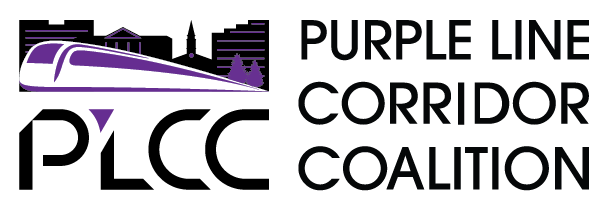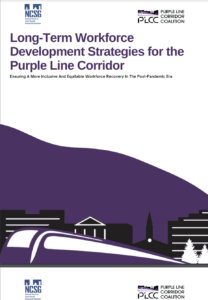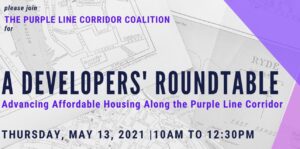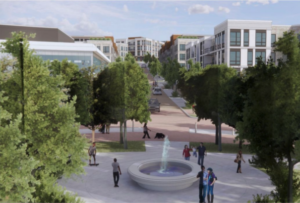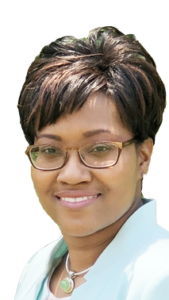h1 {color: white;
text-align:center;
font-size: 30px;
}
Workforce Development
Our Vision
The Purple Line will stitch together four of Maryland’s most significant employment clusters, encompassing only 2% of the land area but featuring 15% of the two counties’ employment. Yet significant income and education disparities persist within the corridor and fall along racial lines. Whereas the Bethesda-Chevy Chase subarea has a median household income of more than $140,000, both the New Carrollton and International Corridor subareas are less than half, at $63,000. Further, the African American and Latino unemployment rate in both counties remains much higher than for whites, even during the economic recovery.
In 2021, PLCC engaged county workforce leadership, nonprofit service providers, community colleges, libraries, school systems, and other stakeholders in both counties to identify strategies to advance workforce development in the Purple Line Corridor. The culmination of that work is Long-Term Strategies for the Purple Line Corridor: Ensuring A More Inclusive and Equitable Recovery in the Post-Pandemic Era.
What We Do
The long-term strategic framework identifies future areas for collective action that includes advancing a robust workforce advocacy agenda, promoting a wide range of forward-looking workforce programs aligned with growing industries, and ensuring workforce development support systems are bolstered in the corridor. The PLCC is working on the following short-term action priorities guided by the accelerating need to generate an environment of opportunity as the Purple Line approaches completion in the next 4 years.
- Conduct Outreach and Promotion of Corridor Workforce Services & Opportunities, working in close collaboration with county agencies, libraries, and other community-based partners.
- Ensure New Mobile Job Centers Regularly Visit Equity Corridor Locations. PLCC is working with both county workforce agencies to ensure that Purple Line neighborhoods with the greatest workforce development needs are served regularly by their new Mobile Job Centers.
- Activate Immigrants into Workforce Services through collaborations with immigrant-serving organizations and agencies to help adult and youth immigrant jobseekers overcome a unique set of barriers, including language and documentation status, to find training and quality jobs.
- Pursue a Shorter-Term Advocacy Agenda at State- and County-Levels. This includes expanded funding for postsecondary training and adult education as well as for high school-level career and technical education (CTE) programs.
- Reengage around Purple Line Construction Work for 2022 and Beyond. The PLCC is working to ensure the new contractor develops effective partnerships with the county workforce agencies and community colleges to build a pipeline of local workers for Purple Line work.
Through these efforts, several thousand corridor residents will get better connected with workforce development training services over the next several years.
Get Involved
If you'd like to advance this work as a partner or supporter, please contact Steve Brigham at steve@publicengagementassociates.com or ssomashe@umd.edu for more details.
Latest Workforce Development Posts
-
-
-
September 28 report release event
September... -
-
-
-
-
-
-

